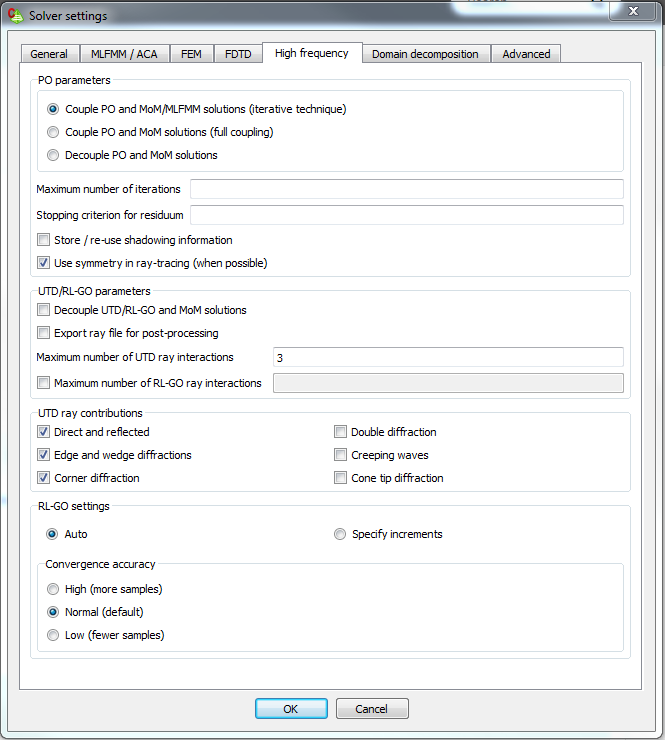I want to run my simulation with explicitly UTD or explicitly PO. However, I don't understand the solver settings in 2018. In default settings, I don't have the option to only select UTD as the PO/MoM has to be selected on top.
<?xml version="1.0" encoding="UTF-8"?>